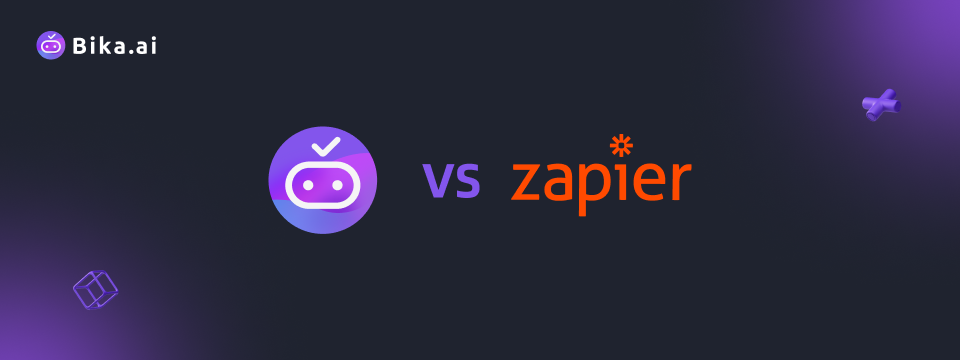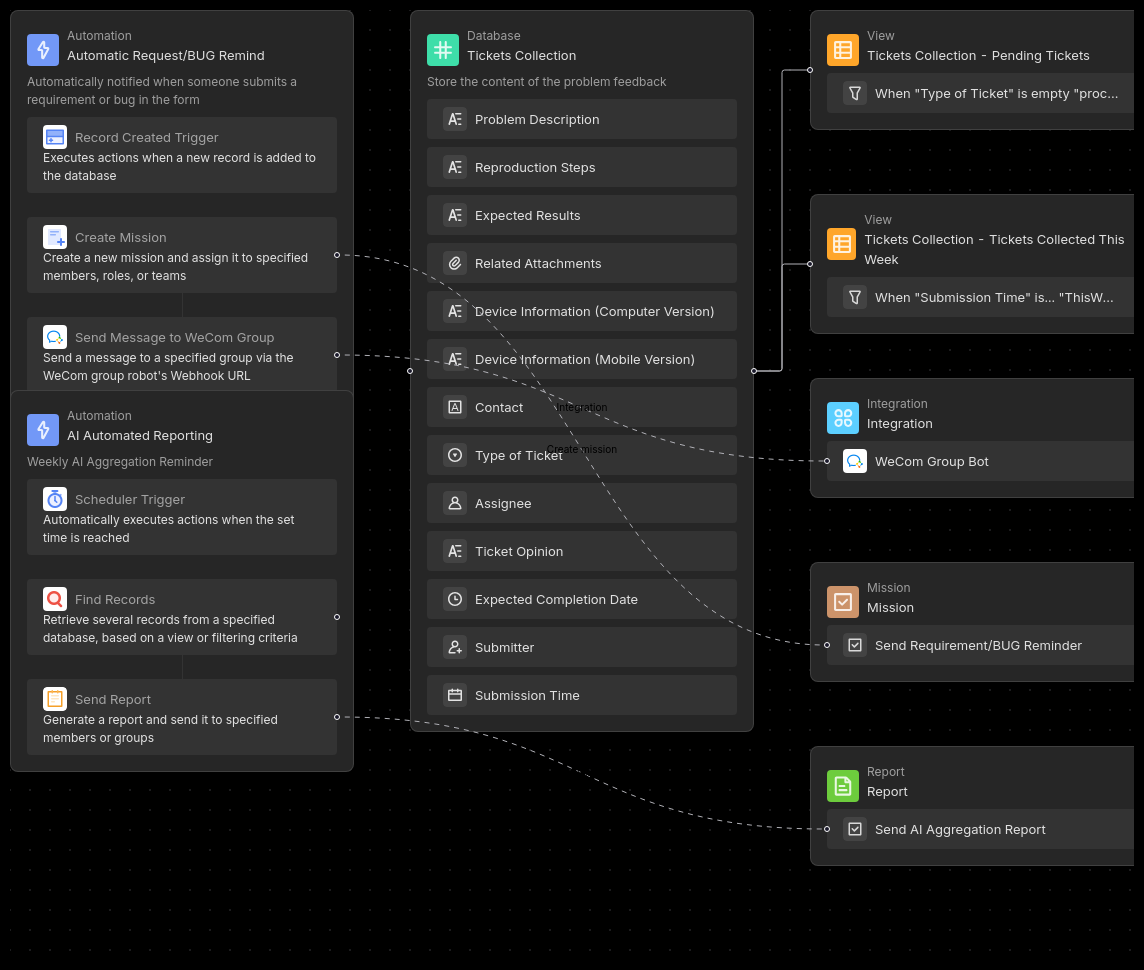
When it comes to preparing documentation for various processes and projects, we often encounter numerous challenges. Managing and organizing a large volume of information, ensuring its accuracy and timeliness, and effectively communicating it to the relevant stakeholders can be a cumbersome task. Many turn to tools like Zapier to streamline this process, but is it really the best option? Enter Bika.ai, a new contender with its AI Project Issues and Tickets template, which claims to revolutionize the way we handle documentation. Free Trial

Let's take a closer look at the key features of Zapier and Bika.ai to understand their differences and advantages.
| Feature | Zapier | Bika.ai |
|---|---|---|
| Pricing | Automation starts at $19.99/month + Database starts at $20/month | Starts at $9.99/month per seat |
| Automation per Month | Starts at 750 tasks/month | Starts at 30,000 runs/month |
| Database Integration | Database separates from automation, additional cost | Integrated visual database with automation |
| Maximum Records | 500,000 records for the highest plan | 1,500,000 records for the highest plan |
| Tables Offered | Up to 50 tables in the highest plan | Unlimited tables |
| Templates | Templates without pre-filled content | Plug-and-play templates with pre-filled content and detailed guides |
| Customization | Limited by app connections and plan limits | Extensive customization with API-first design |
| Integration | Over 6,000 apps | Over 6,000 apps through integrations with Zapier, Make, Pabbly, and others |
| Data Handling | Limited field types and views | 38 field types and 13 node resources |
| Proactive Automation | None | Proactive AI that manages and schedules tasks |
Bika.ai presents several distinct advantages over Zapier when it comes to preparing documentation.
Zapier's separation of its database and automation can lead to a fragmented and complex user experience. Bika.ai, on the other hand, offers a seamless integration of these components, providing a more unified and straightforward approach to documentation management.
Zapier's database capabilities are limited, especially when it comes to handling large amounts of data and complex data types. Bika.ai's powerful visual database can handle up to 1,500,000 records and offers a wide range of field types and node resources, making it ideal for comprehensive documentation.
Zapier may fall short in proactively managing and suggesting tasks related to documentation. Bika.ai's AI-driven approach actively engages users, providing timely reminders, suggestions, and reports, ensuring that the documentation process remains on track.
Zapier's templates often require users to start from scratch and may lack detailed guidance. Bika.ai's templates come with pre-filled content, clear README guides, and architecture diagrams, making it easier and faster to get started with documentation preparation.

Bika.ai has conducted in-depth research and gathered practical feedback specifically for the preparing documentation scenario. By tailoring its features and functionality to meet the needs of this use case, Bika.ai helps users improve efficiency and save valuable time.
The automation of preparing documentation brings significant value to team collaboration. It leads to increased efficiency, reduced time spent on manual tasks, fewer errors, customization options to fit specific team needs, convenience in management, and cost savings. A wide range of professionals, such as project managers, developers, QA engineers, product owners, customer support teams, and business analysts, can benefit from this.

To effectively manage your project issues, tickets, requirements, and bugs using Bika.ai's template, follow these steps:
Switching from Zapier to Bika.ai is a straightforward process:


Coming soon




Coming soon

Coming soon